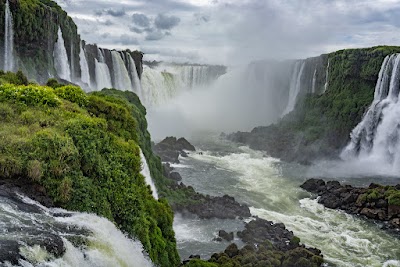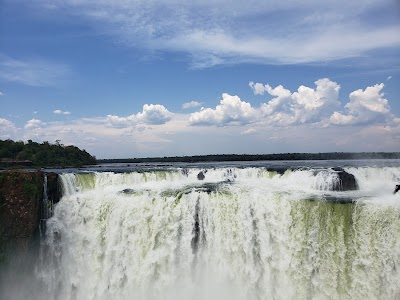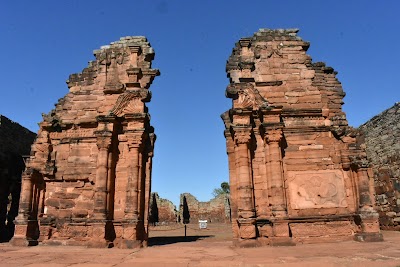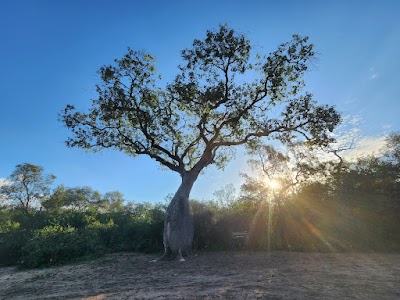Iguazu Falls (Cataratas del Iguazú)
Overview
Discovering Iguazu Falls
Iguazu Falls, located in the verdant subtropical region of Misiones Province in Argentina, is widely regarded as one of the world's most breathtaking natural wonders. Straddling the border between Argentina and Brazil, this magnificent cascade features an expansive network of waterfalls stretching over 2.7 kilometers (1.7 miles) and comprising more than 275 individual falls. Each waterfall possesses its own unique beauty and thunderous roar, captivating thousands of visitors every year. Recognized as a UNESCO World Heritage site since 1984, Iguazu Falls is not only a stunning visual spectacle but also a significant cultural and ecological treasure waiting to be explored.
The Rich History of Iguazu Falls
The history of Iguazu Falls is as captivating as the waterfalls themselves. The name "Iguazu" originates from the indigenous Guarani words "y," meaning "water," and "ûasú," meaning "big." According to local legend, the falls were formed when a deity, in a fit of rage, cleaved the river in two, creating the mismatched waterfalls as a punishment for a beautiful woman trying to flee with her mortal lover in a canoe. While this folklore adds a mystical layer to the falls, their scientific formation can be traced back to volcanic activity approximately 150 million years ago, which sculpted the Paraná Plateau where the waterfalls now flow.
Ecological and Cultural Significance
Beyond their stunning beauty, Iguazu Falls carry profound ecological and cultural significance. The surrounding Iguazu National Park serves as a sanctuary for biodiversity, boasting over 2,000 plant species, 400 bird species, and diverse wildlife, including jaguars, monkeys, and butterflies. Conservation efforts are vital in this region, as it serves as a critical refuge for many endangered species. Additionally, the falls contribute to local communities through eco-tourism, generating jobs and bolstering the regional economy.
The Magnificent Scale of the Falls
One of the most striking features of Iguazu Falls is its sheer scale and diversity. The most famous section, known as the "Devil's Throat" (Garganta del Diablo), is a colossal U-shaped chasm that rises 82 meters (269 feet) high, spans 150 meters (492 feet) wide, and stretches 700 meters (2,296 feet) long. Visitors can approach this awe-inspiring sight via a series of walkways and viewing platforms, experiencing the exhilarating power of water as it plunges into a swirling mist, accompanied by the thunderous roar of the cascade. For those seeking an adrenaline rush, boat tours offer a thrilling ride through the turbulent waters beneath the falls, providing a unique perspective.
Exploring the Park's Trails and Activities
A visit to Iguazu Falls promises an immersive experience of natural splendor and adventure. The park features several well-maintained trails that allow tourists to explore various viewpoints and discover the region's diverse flora and fauna. The Upper Circuit provides panoramic vistas of the upper falls, while the Lower Circuit brings visitors face-to-face with the breathtaking drops amidst lush greenery. Additionally, the area offers a plethora of activities, including guided jungle tours, bird watching, and a scenic train ride that transports visitors through the enchanting landscape.
Fun Facts About Iguazu Falls
There are several intriguing facts about Iguazu Falls that enhance its allure. It is said that upon visiting the falls, First Lady Eleanor Roosevelt exclaimed, "Poor Niagara!"—a testament to the grandeur and scale of Iguazu compared to the famous North American falls. Interestingly, Iguazu Falls spans two countries, with approximately 80% of the falls located within Argentina. This unique geographic position allows tourists to experience the falls from both the Argentinian and Brazilian sides, each offering distinct perspectives and experiences.
Moreover, Iguazu Falls has served as a stunning backdrop for numerous films, including the 1986 movie "The Mission," starring Robert De Niro, and the 2008 Indiana Jones film, "Kingdom of the Crystal Skull." These cinematic showcases have further solidified the falls' status as a global icon of natural beauty.
Best Time to Visit
When planning a trip to Iguazu Falls, timing is crucial. The region experiences a subtropical climate, with the best visiting months typically falling between March and May or August and October, when the weather is mild and the water levels are ideal for experiencing the falls in all their glory. However, witnessing the falls in any season is sure to be an unforgettable experience.
In Conclusion
Iguazu Falls is more than just a picturesque travel destination; it is a vibrant tapestry of history, culture, and unparalleled natural beauty. Whether you are entranced by its roaring waters, captivated by the surrounding wildlife, or intrigued by its historical lore, visitors are guaranteed to leave with memories that last a lifetime. Embrace the opportunity to discover one of Earth's most spectacular natural wonders and immerse yourself in the unforgettable experience that is Iguazu Falls.






